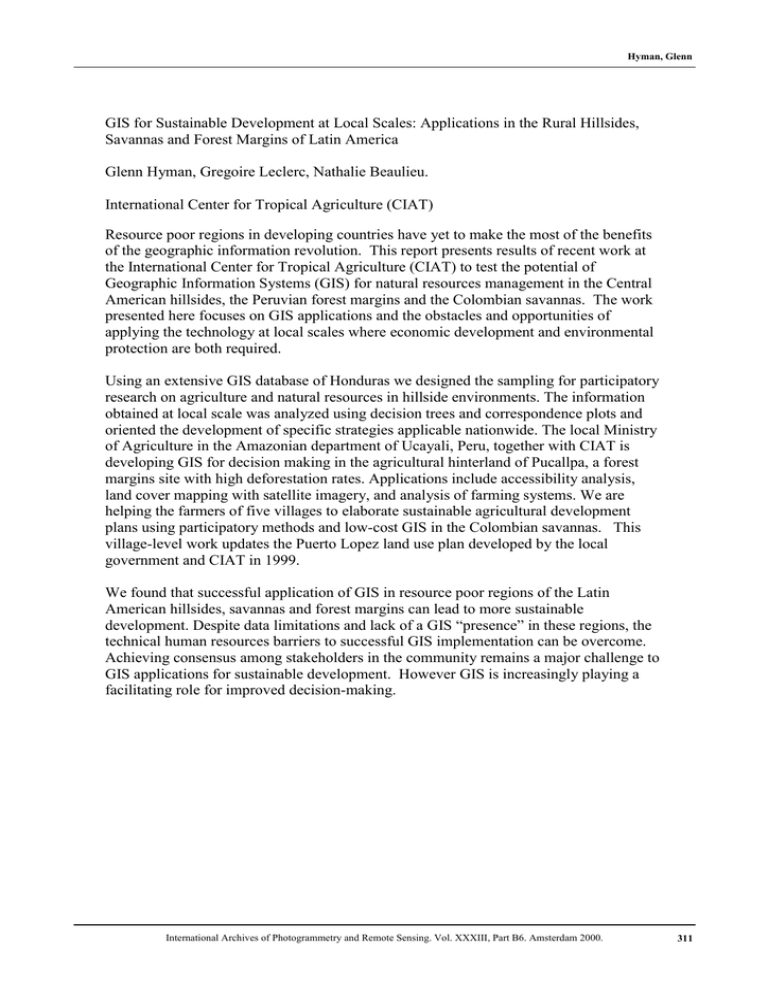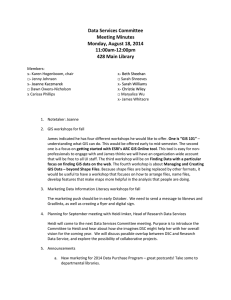GIS for Sustainable Development at Local Scales: Applications in the... Savannas and Forest Margins of Latin America
advertisement

Hyman, Glenn GIS for Sustainable Development at Local Scales: Applications in the Rural Hillsides, Savannas and Forest Margins of Latin America Glenn Hyman, Gregoire Leclerc, Nathalie Beaulieu. International Center for Tropical Agriculture (CIAT) Resource poor regions in developing countries have yet to make the most of the benefits of the geographic information revolution. This report presents results of recent work at the International Center for Tropical Agriculture (CIAT) to test the potential of Geographic Information Systems (GIS) for natural resources management in the Central American hillsides, the Peruvian forest margins and the Colombian savannas. The work presented here focuses on GIS applications and the obstacles and opportunities of applying the technology at local scales where economic development and environmental protection are both required. Using an extensive GIS database of Honduras we designed the sampling for participatory research on agriculture and natural resources in hillside environments. The information obtained at local scale was analyzed using decision trees and correspondence plots and oriented the development of specific strategies applicable nationwide. The local Ministry of Agriculture in the Amazonian department of Ucayali, Peru, together with CIAT is developing GIS for decision making in the agricultural hinterland of Pucallpa, a forest margins site with high deforestation rates. Applications include accessibility analysis, land cover mapping with satellite imagery, and analysis of farming systems. We are helping the farmers of five villages to elaborate sustainable agricultural development plans using participatory methods and low-cost GIS in the Colombian savannas. This village-level work updates the Puerto Lopez land use plan developed by the local government and CIAT in 1999. We found that successful application of GIS in resource poor regions of the Latin American hillsides, savannas and forest margins can lead to more sustainable development. Despite data limitations and lack of a GIS “presence” in these regions, the technical human resources barriers to successful GIS implementation can be overcome. Achieving consensus among stakeholders in the community remains a major challenge to GIS applications for sustainable development. However GIS is increasingly playing a facilitating role for improved decision-making. International Archives of Photogrammetry and Remote Sensing. Vol. XXXIII, Part B6. Amsterdam 2000. 311





